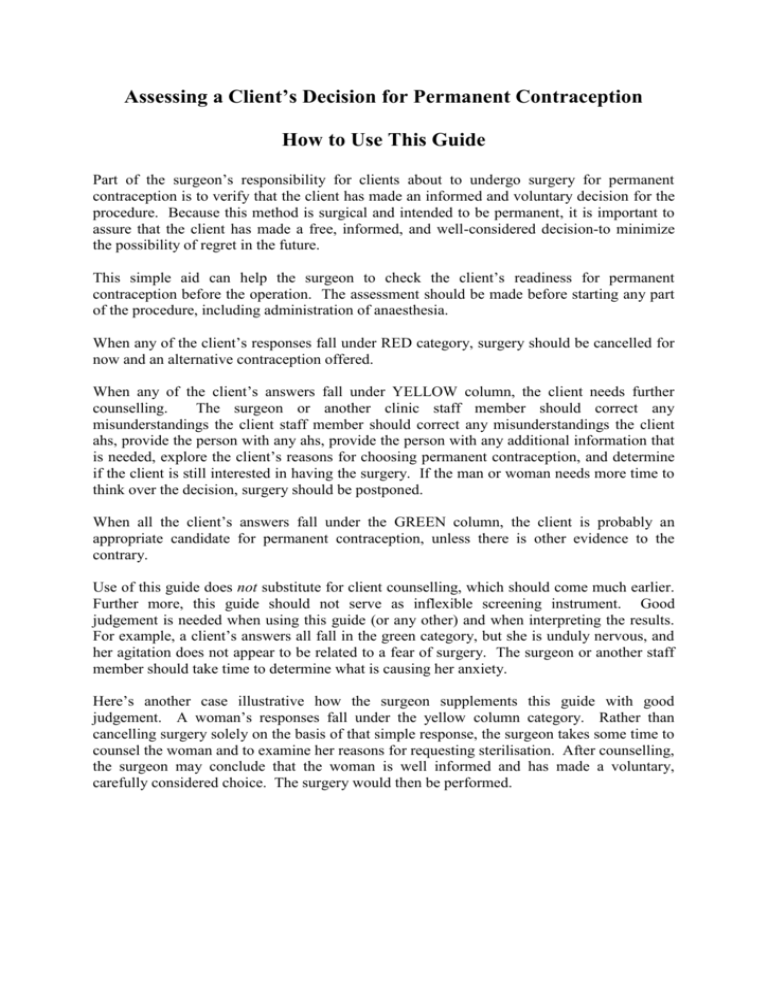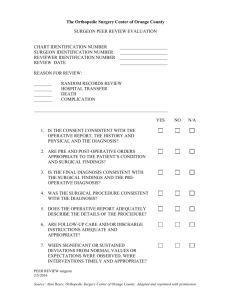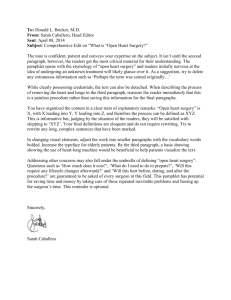Assessing a client`s decision for permanent
advertisement

Assessing a Client’s Decision for Permanent Contraception How to Use This Guide Part of the surgeon’s responsibility for clients about to undergo surgery for permanent contraception is to verify that the client has made an informed and voluntary decision for the procedure. Because this method is surgical and intended to be permanent, it is important to assure that the client has made a free, informed, and well-considered decision-to minimize the possibility of regret in the future. This simple aid can help the surgeon to check the client’s readiness for permanent contraception before the operation. The assessment should be made before starting any part of the procedure, including administration of anaesthesia. When any of the client’s responses fall under RED category, surgery should be cancelled for now and an alternative contraception offered. When any of the client’s answers fall under YELLOW column, the client needs further counselling. The surgeon or another clinic staff member should correct any misunderstandings the client staff member should correct any misunderstandings the client ahs, provide the person with any ahs, provide the person with any additional information that is needed, explore the client’s reasons for choosing permanent contraception, and determine if the client is still interested in having the surgery. If the man or woman needs more time to think over the decision, surgery should be postponed. When all the client’s answers fall under the GREEN column, the client is probably an appropriate candidate for permanent contraception, unless there is other evidence to the contrary. Use of this guide does not substitute for client counselling, which should come much earlier. Further more, this guide should not serve as inflexible screening instrument. Good judgement is needed when using this guide (or any other) and when interpreting the results. For example, a client’s answers all fall in the green category, but she is unduly nervous, and her agitation does not appear to be related to a fear of surgery. The surgeon or another staff member should take time to determine what is causing her anxiety. Here’s another case illustrative how the surgeon supplements this guide with good judgement. A woman’s responses fall under the yellow column category. Rather than cancelling surgery solely on the basis of that simple response, the surgeon takes some time to counsel the woman and to examine her reasons for requesting sterilisation. After counselling, the surgeon may conclude that the woman is well informed and has made a voluntary, carefully considered choice. The surgery would then be performed. How To Assess A Client’s Decision For Permanent Contraception A Surgeon’s Guide For Final Assessment Did the client sign in an informed consent form? YES NO Ask the client these questions: STOP CAUTION GO Should not have surgery now Needs more counselling Signs of a sound decision WHO made the decision for sterilisation? Someone else Client decided, but partner objects Client and partner (or, client, if single) WHEN did the client choose? Now Recently Some time ago WHY did the client choose permanent contraception? Pressure from someone else Has heard permanent method can be reversed Wants no more children HOW did the client decide? While upset or under stress Without enough consideration or information Does not know that they: Permanent Are surgical methods Will mean she/he can’t have more children Has some misunderstandings about the methods Would prefer another method if available Has little knowledge of other methods or their availability WHAT does the client know about: Permanent methods? Other contraceptive methods? After consideration and full information Understands that they: Are permanent Are surgical methods Will mean that she/he can’t have more children Knows of other methods, but prefers permanent contraception.








